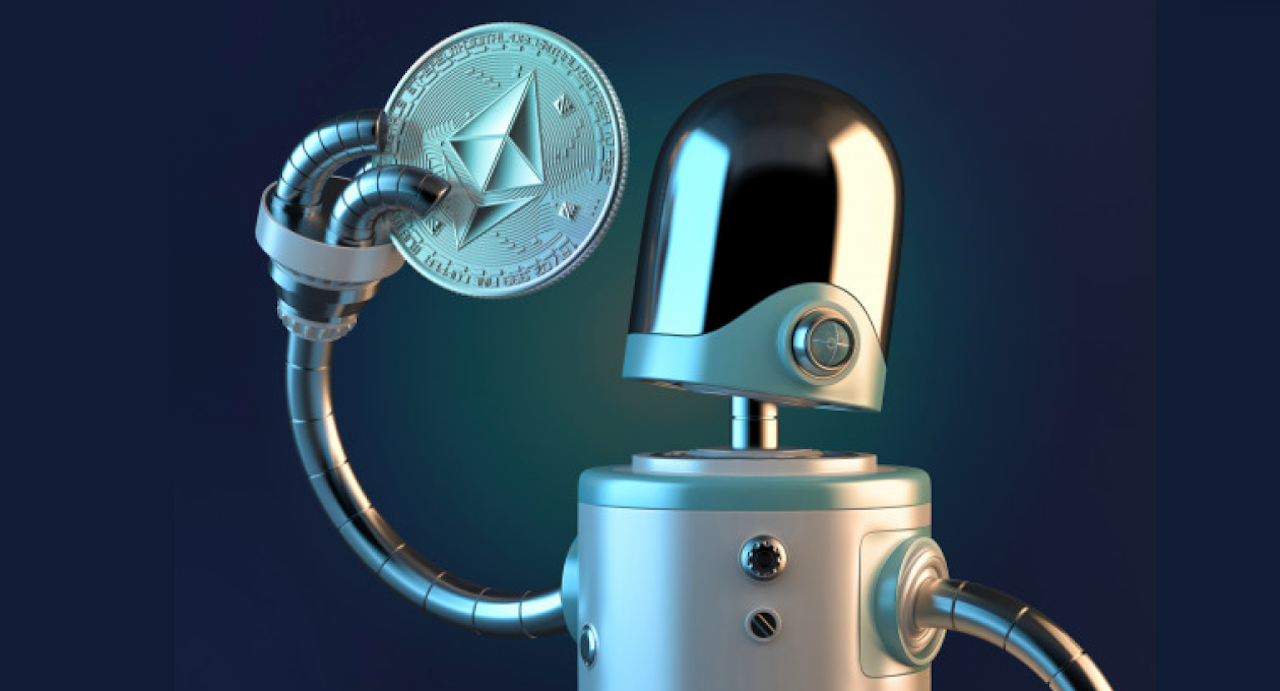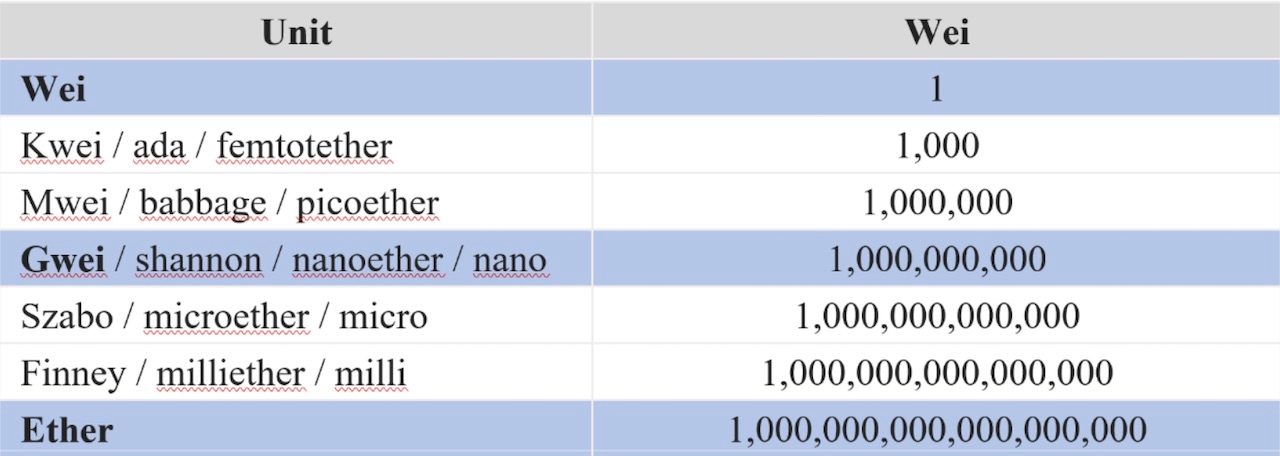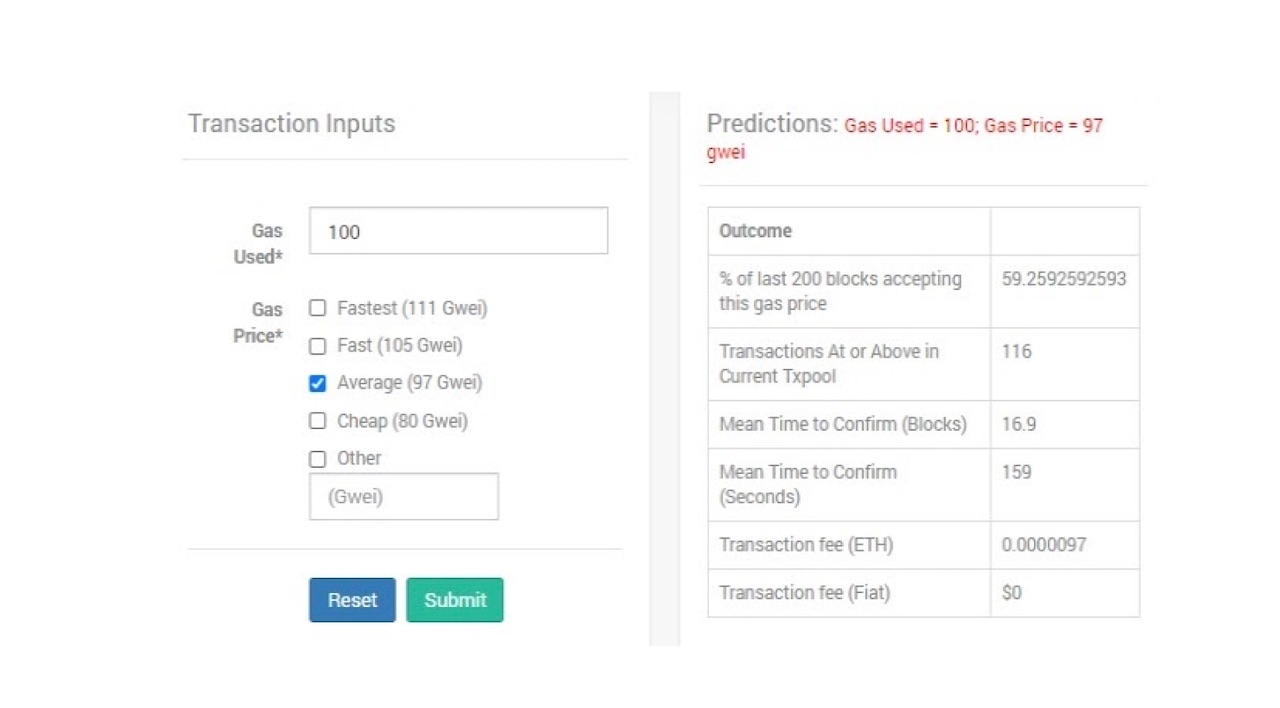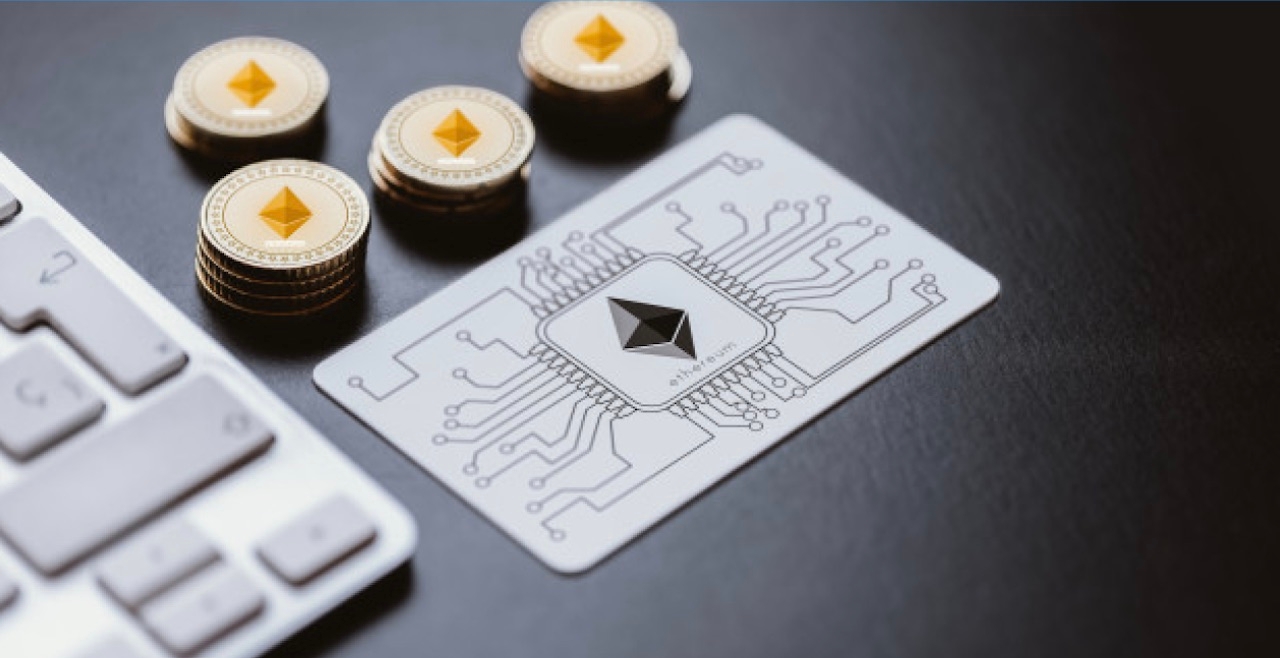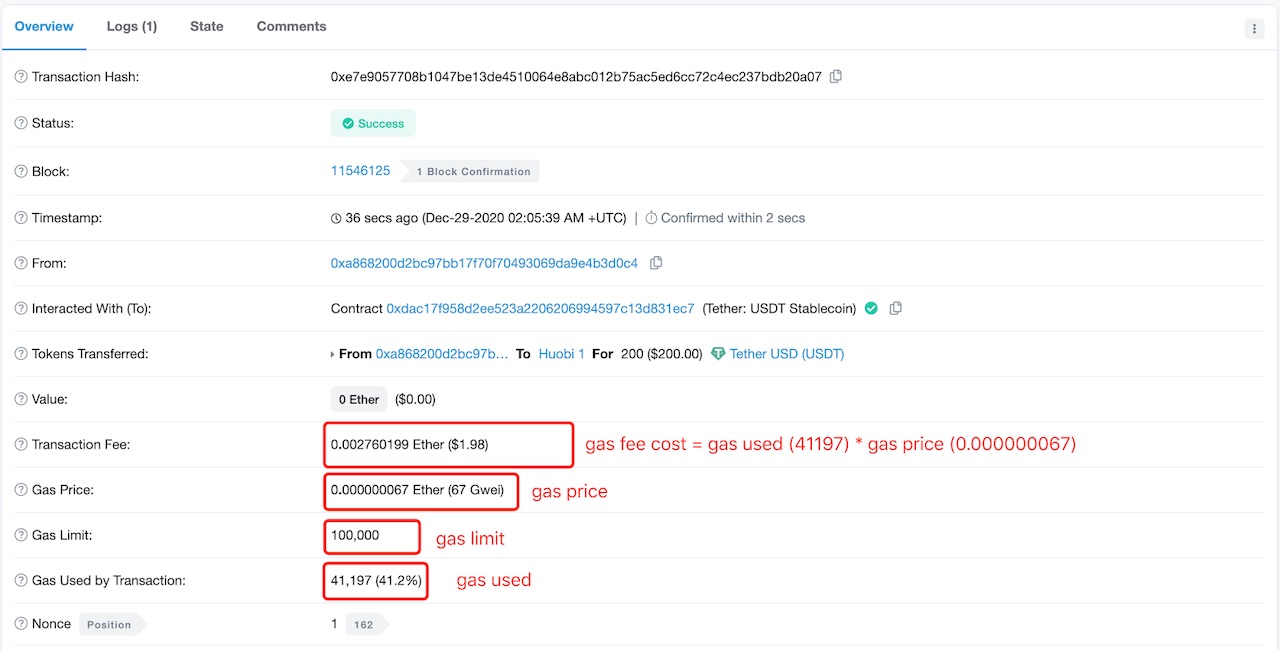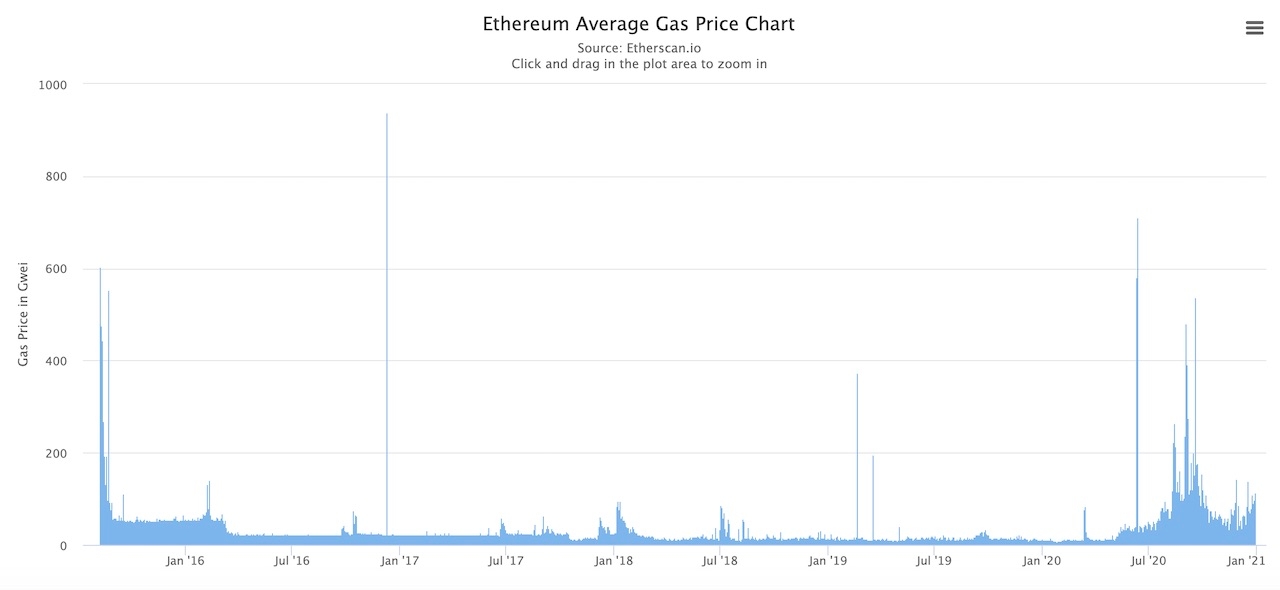What Is ETH Gas & How Does It Impact the Ethereum Network?
The native cryptocurrency Ether (ETH) fuels the Ethereum network. So, whenever you want to transfer ETH to another address, the concept of gas, gas limit, gas price will be associated to perform an ETH transaction.
To understand how ETH gas works, it’s best to start understanding the basics. When analyzing fundamentally, Ethereum is interconnected with a vast web of computers that store and process all transactions on the labyrinth network of Ethereum. Simultaneously, these functionalities are backed up by smart contracts that have been pre-defined to execute trades, including value transfers and settlements without an intermediate party. But, for all of it to happen, ETH gas is needed.
What Is Ethereum (ETH) Gas?
Theoretically, gas is a unit to measure computational work of the transactions or smart contracts executed by miners at their own expense to keep the Ethereum network running.
A gas unit aims to separate the computation cost of the Ethereum network from Ether. These units are not immutable but rather depend on the final values a miner used to execute a transaction. And the gas used is directly proportional to the complexity of the transaction. For example, suppose you intended to perform an ordinary transaction like sending ETH to another person. In that case, it’ll cost 21,000 gas units, but sending ERC-20 transfers may incur a much higher computation cost as the transaction is far more complex.
If a transaction gets complicated and requires 12,500,000 gas to execute, then this block can only hold this transaction once miners package such a transaction. That is because this transaction is full for the entire block.
What Is ETH Gas Price?
The gas price means the cost of Ether for every unit of gas needed to be paid. Typically, gas price is calculated in nanoether, nano, shannon, or “Gwei” (1 ETH = 1×1018 Wei.) The smallest price unit in ETH is in “Wei”. However, the gas price is generally priced at 1,000,000,000 because 1 Gwei equals 109 Wei.
Unlike the gas limit, traders can set this value to adjust their transaction confirmation speed. Mainly because this is a decisive value that determines how fast the miner packs a transaction. These values can either be set manually or recommended by checking websites such as EtherScan or ETHGasStation.
Generally, the payment is taken from the sender’s wallet. Thus, for a transaction to be confirmed, one should have a slightly more significant sum than the one that has to be sent. In comparison, the remainder will be used to cover the fees allocated to the Ethereum Virtual Machine resources and measure the computational efforts in this network.
On the contrary, the transition of Ethereum to Ethereum 2.0 implied the switch of the Proof-of-Work (PoW) to Proof-of-Stake (PoS) consensus mechanism means the gas fees are now paid to the stakers instead of miners.
Does ETH Gas Have A Limit?
Gas limit and gas price are essential elements. However, they are not comparable mainly because different types of transactions yield a different gas limit. The gas limit interprets the maximum amount of gas you wish to pay to execute a transaction. For instance, the gas limit estimates how much gasoline your vehicle needs to travel across 80 miles. And ideally, this value should exceed the actual consumption. Otherwise, you won’t make it to the 80 miles distance.
Typically, there isn’t a limit for ETH gas. However, the higher the gas limit means there is more computation work required to execute the transaction. Though the gas limit of 21,000 gas units is the standard to transfer ETH, there are times where more gas is required for complex executions. Therefore, experienced users, such as developers, or automatic wallet recommendations, should be the ones to set the value instead of a user.
Note, it’s necessary to confirm and execute the operation even if the transaction is inactive. The maximum commission you wish to pay for the transfer is as referred:
Gas Limit x Gas Price
ETH Gas Station is useful to estimate the maximum transaction fee when given the gas limit and gas price at a given moment. Since the gas price is changing continuously, and the transactions’ complexity is varied. Hence, using an automated gas calculator can better estimate the transaction fee. Besides, the automated calculation helps users to better gauge the time-frame a miner needs to mine a block.
According to Ethereum yellow paper, 21,000 gas is needed for an ordinary transaction. However, one should understand that this is not the commission charged by MyEtherWallet or Metamask but the payment that miners get for the processing a transaction.
Why Does Ethereum Require Gas?
Like Bitcoin, Ethereum 1.0 relies on the Proof-of-Work consensus algorithm where miners’ hash rate determines the system’s security. For that, miners are motivated with rewards. There is a direct dependence of the network security on the number of transaction fees a miner can earn. The more they earn, the higher is the stability of the system. With more miners working in a peer-to-peer network, the Ethereum network increases its hash rate.
On the contrary, in the Bitcoin network, the fees are determined by users and miners. Thus, creating an open marketplace where the processing of transactions can be rejected due to low fees. However, despite this similarity, some significant differences between these two networks as Ethereum support a much broader range of functions.
What Are The Other Uses of ETH Gas?
When comparing Bitcoin and Ethereum, it’s important to note that the latter is much more than just a cryptocurrency and a means of payment.
The Ethereum network uses blockchain technology to provide an open software platform for everyone. Developers can use programming languages like Solidity and Vyper’s technology to create smart contracts. These are self-closing agreements that can facilitate the transfer of money, content, property, or anything of value, provided that pre-set parameters are met.
Ethereum users can also create their decentralized applications (dApps). All of it, by connecting their dApps to the blockchain through a smart contract, users can be sure that their code is executed exactly as written, without relying only on the developer. Many DApps are running on the Ethereum platform covering various areas such as job search websites, games, and more.
To launch a dApp on the Ethereum blockchain, you need to pay a transaction fee. Thus, gas is considered to be not only a cryptocurrency but the fuel for creating decentralized applications on the network. Every action that takes place on the Ethereum network requires a different amount of computing power. The more resources and the more complex the transaction is, the more ETH you’ll need to pay.
While Bitcoin focuses on payments, Ethereum offers its open-source blockchain technologies to developers and enterprises that can use them to create new programs. The Ethereum network is like the App Store, where developers can create their apps to work on the network.
How Do The Gas And Fees Impact A Miner?
A miner who creates a block will receive the commission for it. When generating the block, the miners must decide what kind of transactions to include in it.
They may choose transactions in an unexpected way. A user sending ETH should set the corresponding ETH gas price for miners to motivate them to include a transaction in the block (since they get all the commissions). Most of the miners would have a more straightforward strategy. Typically, they’ll collect the transactions, copy them at the price of gas ranging from the highest to the lowest level, and fill up every new block with them.
The gas price should be sufficiently high for a miner to add to your transaction into the block. If you are in a hurry, then you can set a higher price to bypass other transactions. Otherwise, you can just set the price, which will be sufficient for a miner to add to the block.
How To Set A Gas Price?
The gas fee is the actual fee for a transaction. And the gas fee cost refers to the gas used gas price. When the gas, gas price and gas limit are considered, it’ll then yield your final transaction fees.
The gas fee is a variable figure. For instance, theoretically, the transaction can require 25,000 gas, but only 21,000 gas is spent on processing transactions in practice. The remaining amount of gas will be refunded at once to the person who sends the transaction. This feature becomes an additional source of income for miners.
When Ethereum still relies on the PoW consensus with limited capacity, the gas prices could soar when the network is overloaded. Ethereum 1.0 is capable of processing 13-15 transactions per second on average, which significantly complicated the processes, mostly when the industry is at the uptrend.
As the current ETH gas price fluctuates concerning USD, a normal transaction fee could range from half a cent to several dollars. For example, the soaring interest in DeFi causes an influx of transactions and eventually leads to a surge of Ethereum’s average gas price in late 2020. As a result, the average gas price increased from 11.73835 Gwei on 7 Aug 2019 to the peak of 538.006 Gwei on 17 Sep 2020— all within a year.
To set the best price for Ethereum gas, one should rely on the network’s current state and personal requirements for the transaction speed. The higher is the network overload and the faster you need your transaction to be processed, the higher the gas price you will have to pay.
Will The High Gas Price Impact Network Stability?
Despite the problems of high gas prices, the Ethereum network remains stable. However, the expensive gas defies the Ethereum network’s main concept. Generally, the high processing fees exclude the possibility of microtransaction payments and decrease the chances of cryptocurrency mass adoption. Of course, Ethereum miners may benefit financially from the situation. However, these short-term benefits undermine the basis of this network as it is not practical for settlements in a smaller transaction.
How Did The DeFi Boom Affect ETH Fees?
The sudden popularity of decentralized finance in 2020 increased Ethereum users’ number. Hence there’s a demand surge for ETH. Decentralized finance (DeFi) is the term for financial service based on smart contracts for easier transactions between the parties.
The DeFi boom has become the cause for the technical issues of the Ethereum network. The largest DeFi platform, Uniswap, created based on Ethereum, started bottlenecking the system with a significant number of transactions. As a result, the transaction fees became incredibly high. Their amount outpaced Bitcoin, and the gap between networks increased.
The development of the DeFi industry also gave birth to the concept of yield farming that has become incredibly popular. That is a new method of earning rewards using decentralized money-making protocols. Users should only invest in cryptocurrency to get their interest. The earnings can be 100% ~ 2,000% APR (Annual Percentage Rate) on certain yield farming pools in the mid of 2020. However, the losses can be severe when the smart contract’s protocol is exploited. Despite the risk, millions of people are interested in yield farming with potential profit gains.
The Ethereum Scalability Problem And Its Solutions
Scalability was one of the problems inherent to Ethereum 1.0. This resulted in a higher gas price and other severe issues during its existence.
Beyond Vitalik Buterin, the community has acknowledged this problem and set the goal of switching the network to the PoS consensus. The project aims to implement sharding technology, which implies breaking the network into small parts or shards to confirm transactions and improve its transaction speed.
Once Ethereum completes the migration, transactions will be processed by validators instead of miners. As a result, the transaction speed will be increased. And the fees will be lowered, and the network’s overall efficiency will be much higher.
Closing Thoughts
Ethereum gas is an essential part of the network that serves to reward the network participants for maintaining the platform’s security and efficiency. Understanding its calculation and use principles is crucial. That is especially for those who aim to delve deeper into DeFi and adopt to blockchain technology in everyday life.
